On 1943-10-08, Squadron Leader A. Ross Dawson, an Engineering Officer with 427 Sqn at Skipton-on-Swale, wrote in his diary:
"Well we were on tonight for a change after a two week stand-down [due to poor weather]. I thought I'd make an effort to make a good showing on my first real op on my own. The boys co-operated fine and we got a record 16 kites up each with 1882 gals of petrol, 6500 lbs of bombs, 1-2000 lb., 5 cans of 4-30 lb. incendiaries & 8 cans of 90- 4lb. as well as 14 bundles of "window" incendiaries, the metallic strips they shower down when over target to throw out & jam the jerry radio-location beams. It looked pretty good at take-off & although we had 2 go u/s [unserviceable] just before take-off we managed to shift the crews around to stand-by kites & so we got them all away.
I was feeling pretty good about this but soon things began to happen. First the weather closed in & it turned very cold with a sheet-like rain. Then one after another we got the news that seven aircraft were coming back on early returns never having reached the target. This was awful for my first "do" but it seemed that 3 of the seven were due to very bad icing conditions, 2 were due to maintenance faults for which I had to take the blame. One was due to the pilot getting lost and getting too low down over the Ruhr where he got badly shot up with flak while the seventh never got back at all. He crashed down near Eastmoor somewhere & burned up. All crew were killed so I don't suppose we'll ever find out what happened. With Squadron Leader Ganderton I drove around & met each pilot and flight engineer as they got out of their kites, found out their story & made out my report to the station engineering officer. I was nearly 11:00 o'clock when they all got back & since the weather was duff I was getting a little apprehensive about how many of the rest would get back.
At 12:00 o'clock I went down to flying control to watch as the rest of the kites came in. It was very exciting hearing them talk them in one by one by radio and watching them land. We had two near accidents, one when he was swung & ground looped just after landing & the other when a few hung-up incendiaries fell out of a kite on the runway and went up with a terrific roar & bright flames. However, no one was hurt & we kept counting them one by one as they got down safely until there was only 4 more of ours to come in. We waited and waited but they didn't come & we finally had to give them up for lost. About 1:00am I went up to interrogation to find out from each pilot & flight engineer how the kite had functioned & what damage had been sustained. Finally after about an hour I went to the operations room to see if they had any word of our missing aircraft (& they hadn't). I finally got back to the Mess at 3:30am, had fried potatoes and sausages & went to bed.
Sat Oct 23, 1943: "Things were pretty grim here this morning with everyone worried about our big losses. 4 of ours & 2 from 429 making 6 out of 28 aircraft. Also my six early returns didn't make me feel any too happy. Fortunately we were stood down tonight. The target was Kassel last night & 42 were lost altogether. Mostly due to icing I imagine. Our K-Kitty which had several flak holes in it wasn't too bad although it needed and engine change. . . ."
Reynolds, Clarence Cecil
Killed in Action 1943-10-22
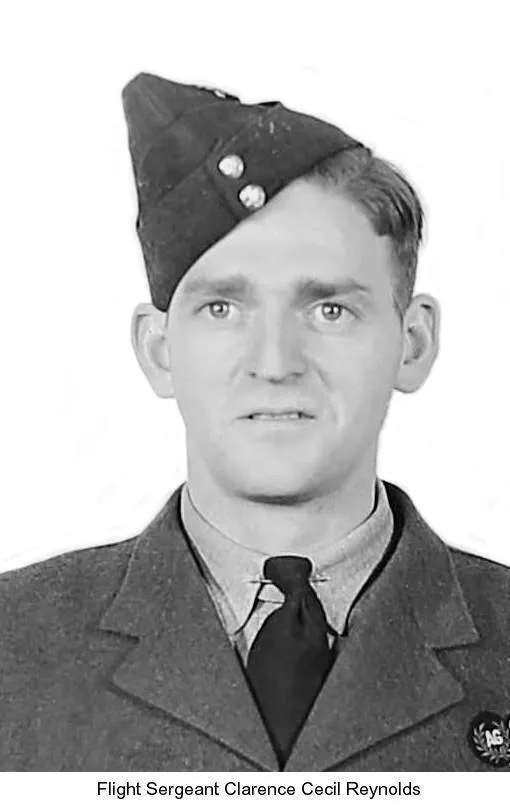

Birth Date: 1914
Born:
Son of Harold and Sadie Smith Reynolds; husband of Evelyn Reynolds, of Kingsport, King's County, Nova Scotia.
Home: Kingsport, King's County County, Nova Scotia
Enlistment:
Enlistment Date: Unknown
Service
RCAF
Unit
434 (B) Sqn- Squadron
In Excelsis Vincimus We conquer in the Heights
Base
RAF Tholthorpe
Rank
Flight Sergeant
Position
Flight Sergeant
Service Numbers
R/104432
Target
 Kassel Germany
Kassel Germany
434 Bluenose Squadron (In Excelsis Vincimus) RAF Tholthorpe. Halifax BV aircraft LK 663 IP-F was abandoned and went down near Godelheim, Germany during a night trip to bomb aircraft manufacturing plants and rail facilities at Kassel, Germany
FS CC Reynolds (RCAF) was killed in action
Halifax B/Met.Mk.V LK663
Flying Incident - Court Martial 1943-October-21 to 1943-October-22
() ()
Halifax LK663
Handley Page Halifax

The Handley Page Halifax is a British Royal Air Force (RAF) four-engined heavy bomber of the Second World War. It was developed by Handley Page to the same specification as the contemporary twin-engine Avro Manchester.
The Halifax has its origins in the twin-engine HP56 proposal of the late 1930s, produced in response to the British Air Ministry's Specification P.13/36 for a capable medium bomber for "world-wide use." The HP56 was ordered as a backup to the Avro 679, both aircraft being designed to use the underperforming Rolls-Royce Vulture engine. The Handley Page design was altered at the Ministry to a four-engine arrangement powered by the Rolls-Royce Merlin engine; the rival Avro 679 was produced as the twin-engine Avro Manchester which, while regarded as unsuccessful mainly due to the Vulture engine, was a direct predecessor of the famed Avro Lancaster. Both the Lancaster and the Halifax would emerge as capable four-engined strategic bombers, thousands of which would be built and operated by the RAF and several other services during the War.
On 25 October 1939, the Halifax performed its maiden flight, and it entered service with the RAF on 13 November 1940. It quickly became a major component of Bomber Command, performing routine strategic bombing missions against the Axis Powers, many of them at night. Arthur Harris, the Air Officer Commanding-in-Chief of Bomber Command, described the Halifax as inferior to the rival Lancaster (in part due to its smaller payload) though this opinion was not shared by many of the crews that flew it, particularly for the MkIII variant. Nevertheless, production of the Halifax continued until April 1945. During their service with Bomber Command, Halifaxes flew a total of 82,773 operations and dropped 224,207 tons of bombs, while 1,833 aircraft were lost. The Halifax was also flown in large numbers by other Allied and Commonwealth nations, such as the Royal Canadian Air Force (RCAF), Royal Australian Air Force (RAAF), Free French Air Force and Polish forces.Wikipedia
 National Air Force Museum of Canada
National Air Force Museum of Canada
434 (B) Sqn In Excelsis Vincimus ("Bluenose")
History of the Squadron during World War II (Aircraft: Halifax V, III, Lancaster I, III)
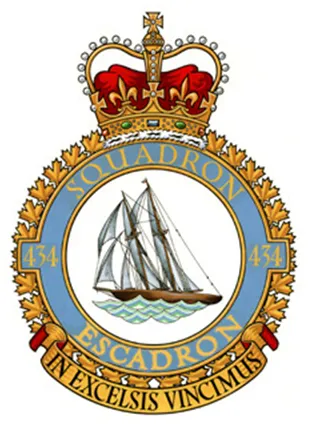
The unit was first formed at RAF Tholthorpe, Yorkshire, UK on 13 June 1943, flying the Handley Page Halifax Mk V aircraft. It was the 31st squadron and the 13th Bomber unit formed overseas. From its initiation it was part of the No 6 (RCAF) Group of RAF Bomber Command. On 13 August 1943 it flew its first operational sortie, a bombing raid across the Alps to Milan, Italy. In May 1944 the unit received Halifax Mk IIIs to replace its Mk Vs. The squadron was adopted by the Rotary Club of Halifax, Nova Scotia and to show its connection to the city adopted the nickname "Bluenose Squadron", the common nickname for people from Nova Scotia and a tribute to the schooner Bluenose; an image of the schooner appears on the squadron badge.
The squadron moved to RAF Croft, Yorkshire in December 1943 and re-equipped with Avro Lancaster Mk Is and Mk Xs in December 1944. After VE Day the squadron was earmarked for the Tiger Force to carry on the war against Japan, but was never deployed to the Far East because of the Japanese surrender. The unit was disbanded at Dartmouth, Nova Scotia on 5 September 1945.
During World War II the unit flew 198 missions, including 179 bombing, 17 mine laying, one diversionary and one sea search. This was made up of a total of 2582 individual aircraft sorties, including 45 prisoner of war airlift sorties. It flew 14,622 operational flying hours and dropped 10,358 tons of bombs plus 225 mines. The squadron accounted for seven enemy aircraft destroyed along with two probable and four damaged. 434 Squadron suffered 75 aircraft lost, 484 aircrew operational casualties, including 34 killed, 313 presumed dead, 121 made prisoners and 16 who evaded capture and escaped. Unit personnel received six bars to the Distinguished Flying Cross, 108 DFCs, six Distinguished Flying Medals, one British Empire Medal and seven Mentions in Despatches. Battle Honours were: English Channel and North Sea 1943-44, Baltic 1943-44, Fortress Europe 1943-44, France and Germany 1944-45, Biscay Ports 1944, Ruhr 1943-45, Berlin 1943-44, German Ports 1944-45, Normandy 1944, Rhine.Wikipedia, Kostenuk &Griffin .
 Squadron History (Bomber Command Museum PDF)
Squadron History (Bomber Command Museum PDF)
Maps for Movements of 434 Squadron 1943-45
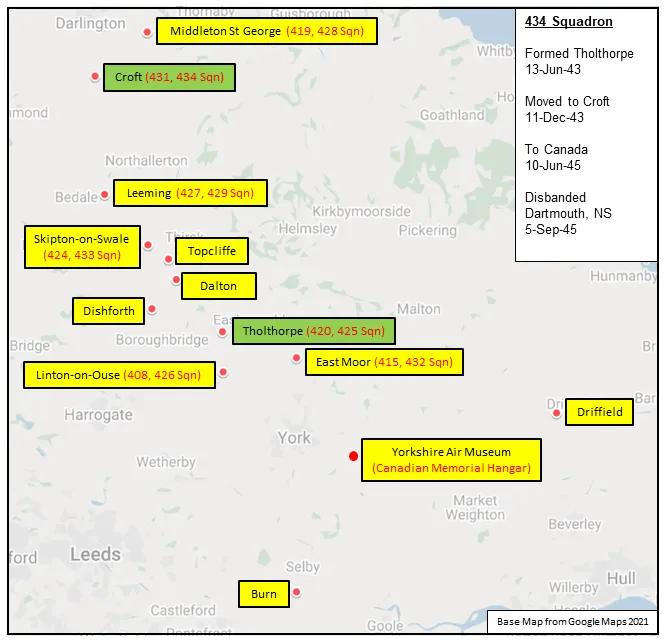
434 Squadron History Summary 1943-45
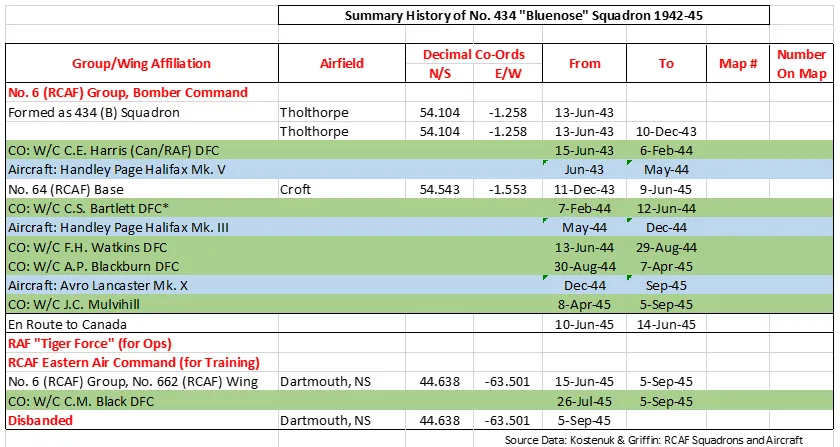
History of the Squadron Post-WWII (Aircraft: Sabre 2, 5, 6, Starfighter, Freedom Fighter, Challenger)
The squadron was re-formed as a fighter unit at Uplands, Ontario on 1 July 1952, flying Canadiar Sabre aircraft. It joined No.3 (Fighter) Wing at Zweibrücken, Germany in March 1953. It was selected to be one of the eight squadrons to be equipped with the CF-104 Starfighter in a Strike Attack role. Accordingly, it was deactivated on 15 January 1963 and reactivated on 8 April. The squadron was deactivated on 1 Mar 1967.
The unit was re-formed as 434 Operational Training Squadron at CFB Cold Lake, Alberta on 15 February 1968 as the operational training unit for the Canadair CF-5 Freedom Fighter. The squadron later gave up its OTU duties to 419 Squadron and became an operational squadron, moving to CFB Bagotville on 15 July 1982, later moving to CFB Chatham in July 1985. It was again disbanded on 17 March 1989. The unit was again re-formed as 434 Composite Squadron at CFB Shearwater on 4 July 1992. The name was changed to 434 Combat Support Squadron and the unit moved to CFB Greenwood in mid-1995, flying the CC-144 Challenger and Canadair CT-133 Silver Star in the electronic warfare role. The squadron was once again disbanded there in May 2000.
The squadron was reactivated in May 2018 at CFB Trenton as a test and evaluation unit. For details see
. Canadian Virtual War Memorial
Canadian Virtual War Memorial

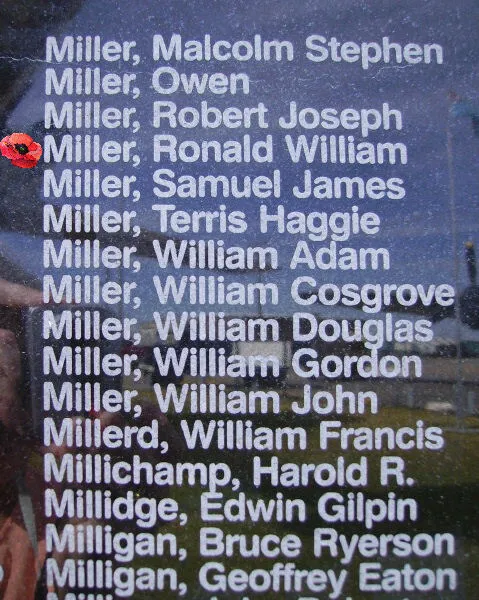
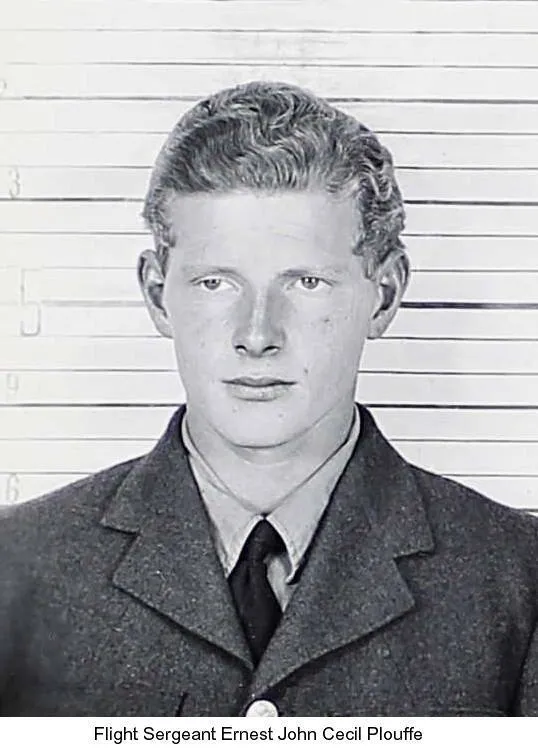
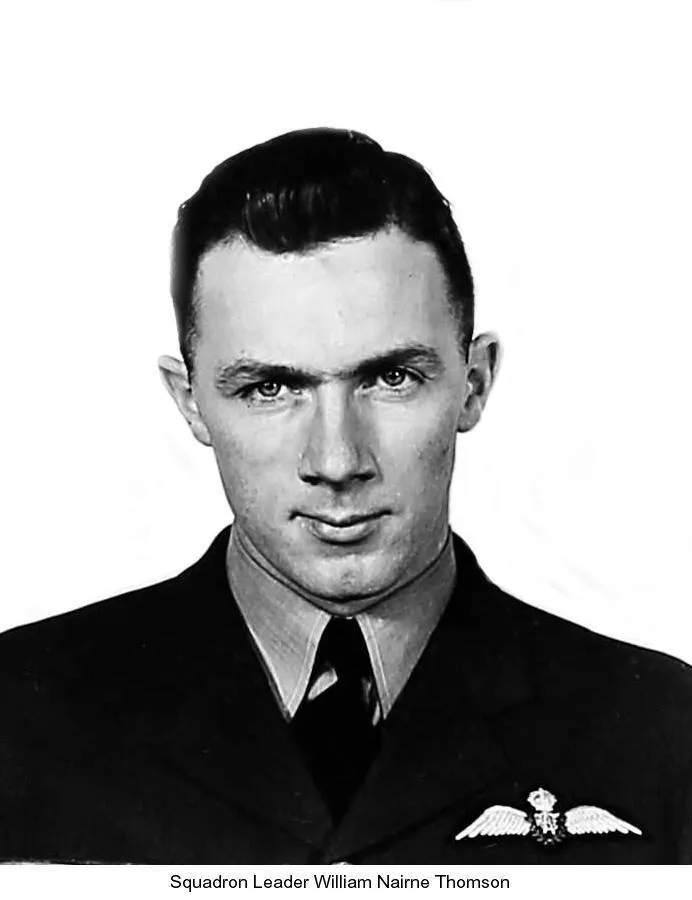
 Halifax Heavy Bomber WWII
Halifax Heavy Bomber WWII Harold A Skaarup Web Page
Harold A Skaarup Web Page Wikipedia Halifax Bomber
Wikipedia Halifax Bomber